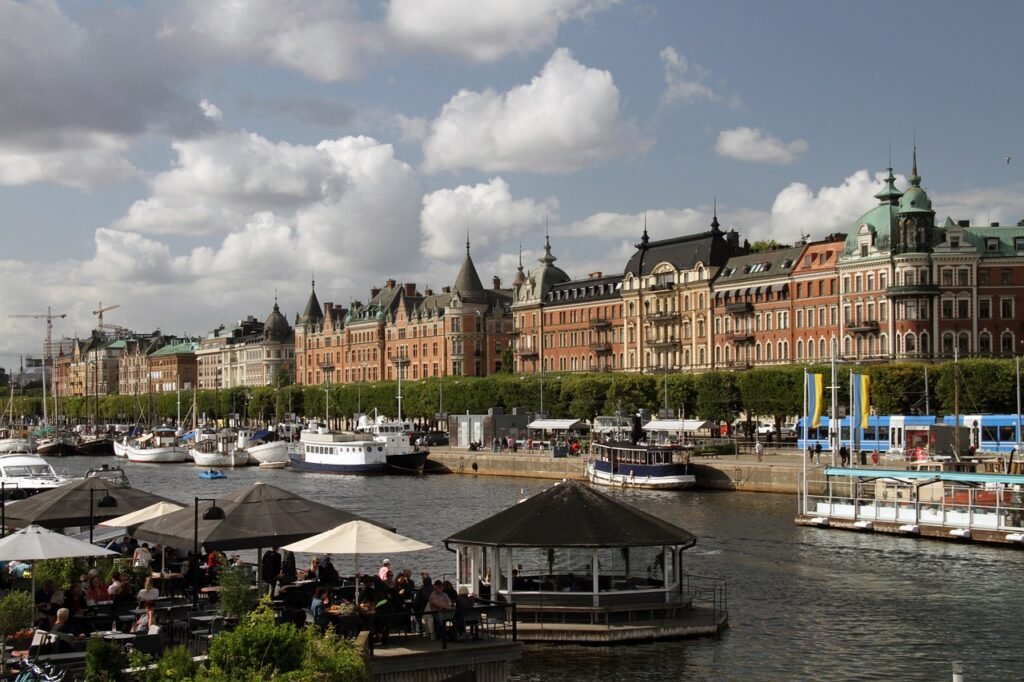Sweden, known for its stunning landscapes, vibrant cities, and rich cultural heritage, offers something for every type of traveler. Whether you’re visiting the bustling capital of Stockholm, exploring the natural beauty of the north, or experiencing the cozy charm of Swedish towns, here’s some essential travel advice to make your trip as smooth and enjoyable as possible.
1. When to Visit Sweden
The best time to visit Sweden depends on the type of experience you’re after. Sweden experiences four distinct seasons, each offering a unique adventure:
- Summer (June to August) is the most popular time to visit, with long days, mild weather, and a festive atmosphere. It’s perfect for outdoor activities like hiking, biking, and enjoying the beautiful archipelago.
- Winter (December to February) brings a winter wonderland, ideal for skiing, snowboarding, and experiencing the magical Northern Lights in Swedish Lapland.
- Spring (March to May) and Autumn (September to November) are less crowded but still offer beautiful landscapes, especially for nature lovers and those seeking a quieter experience.
2. Getting Around in Sweden
Sweden’s transportation system is efficient, clean, and easy to navigate. Whether you’re exploring cities or venturing out into nature, getting around is simple.
- Public Transport: In cities like Stockholm, Gothenburg, and Malmö, public transportation is reliable. You’ll find buses, trams, and metros that connect all major areas. In Stockholm, the SL Access card gives you unlimited travel on all forms of public transport within the city.
- Trains: Sweden has an excellent rail network, with trains connecting major cities and smaller towns. High-speed trains make it easy to travel between Stockholm, Gothenburg, and Malmö. You can also take overnight trains to northern Sweden for a chance to view the Northern Lights.
- Bikes: Sweden is bike-friendly, with many cities offering bike rentals and extensive cycling paths. It’s a great way to explore towns and enjoy the countryside.
- Cars: Renting a car is an option for those looking to explore the rural parts of Sweden or head into the mountains. Driving in Sweden is relatively easy, but be prepared for the possibility of icy roads in winter.
3. Essential Things to Pack
Sweden’s weather can be unpredictable, so it’s essential to pack layers. Whether you’re visiting in summer or winter, being prepared will help you enjoy your trip to the fullest.
- Summer: Even in the warmer months, it can be cool in the evenings, so bring a light jacket. Comfortable walking shoes are a must for sightseeing, and don’t forget sunscreen—Swedes love to be outside, especially when the sun is shining!
- Winter: If you’re visiting in winter, pack warm, waterproof clothing. Layers are key, and a quality winter coat, gloves, and boots will help you stay cozy while you enjoy the snowy landscapes.
4. Money and Payments
Sweden is one of the most cashless countries in the world. Credit and debit cards are accepted almost everywhere, and many places prefer card payments over cash. Mobile payment services like Swish are widely used in Sweden, and you can easily set up an account if you plan to stay for a while.
While Sweden isn’t as expensive as some other Scandinavian countries, it’s still important to budget for your trip. Dining out can be costly, but there are plenty of budget-friendly options, including fast-casual restaurants, cafes, and supermarkets.
5. Language and Communication
Swedes are known for their excellent English skills, so language won’t likely be a barrier during your trip. However, learning a few basic Swedish phrases can be appreciated by locals and add a personal touch to your travels.
- Hello: Hej (pronounced “hey”)
- Thank you: Tack
- Please: Snälla
- Goodbye: Hejdå
Even if you don’t speak Swedish, you’ll find that people are generally happy to help and often switch to English without hesitation.
6. Must-See Destinations
Sweden offers a wide variety of attractions, from urban wonders to breathtaking natural landscapes. Here are some highlights to consider for your itinerary:
- Stockholm: Sweden’s capital is a beautiful blend of historic charm and modern energy. Explore Gamla Stan (the Old Town), visit the Vasa Museum to see a preserved 17th-century ship, and stroll through the Royal Palace.
- Gothenburg: Located on the west coast, Gothenburg is known for its lively food scene, stunning canals, and friendly vibe. Don’t miss the Liseberg Amusement Park and the quirky Haga District.
- Kiruna and Swedish Lapland: For an unforgettable experience, head north to the Arctic Circle. Here, you can witness the Northern Lights, stay in the Icehotel, and explore remote wilderness areas.
- Gotland: This medieval island is perfect for those looking to experience traditional Swedish culture with charming cobblestone streets, stunning beaches, and ancient ruins.
- Abisko National Park: For hikers, this park in the far north is one of the best places to explore the dramatic beauty of Sweden’s natural landscapes, especially during the winter months.
7. Swedish Food and Drink
Sweden has a rich culinary tradition, with hearty, flavorful dishes that reflect the country’s northern climate. Don’t miss these Swedish food staples:
- Köttbullar (Swedish Meatballs): The iconic Swedish dish, often served with lingonberry sauce and creamy mashed potatoes.
- Gravad Lax: Salmon that’s been cured with salt, sugar, and dill, typically served with mustard sauce.
- Smörgåsbord: A buffet-style meal featuring a variety of hot and cold dishes, including pickled herring, meats, cheeses, and bread.
- Fika: A cherished Swedish tradition of taking a coffee break with something sweet, like cinnamon buns (kanelbullar). Be sure to experience a fika at one of Sweden’s many charming cafes.
8. Cultural Etiquette
Swedes value personal space and privacy, so be respectful of people’s personal space, especially in public places. A firm but not overly strong handshake is the usual form of greeting.
Punctuality is important in Sweden, and being late is considered rude. Whether it’s a meeting, dinner, or social gathering, aim to be on time.
Swedes are also very eco-conscious, so do your best to recycle and dispose of waste properly. You’ll see recycling bins everywhere, and most Swedes take this responsibility seriously.
9. Safety and Health
Sweden is one of the safest countries in the world for travelers. Violent crime is rare, but like any destination, it’s wise to stay aware of your surroundings and take care of your belongings in busy areas.
Swedes have excellent healthcare, and if you’re an EU citizen, you’ll receive necessary medical care with your European Health Insurance Card (EHIC). For non-EU visitors, it’s recommended to have travel insurance that covers medical expenses.
Final Thoughts
Visiting Sweden is an unforgettable experience, filled with stunning landscapes, rich history, and friendly locals. Whether you’re exploring cities, venturing into nature, or diving into Swedish culture, the key to a successful trip is to embrace the beauty of simplicity. Pack accordingly, respect the culture, and let the charm of Sweden unfold before you.




